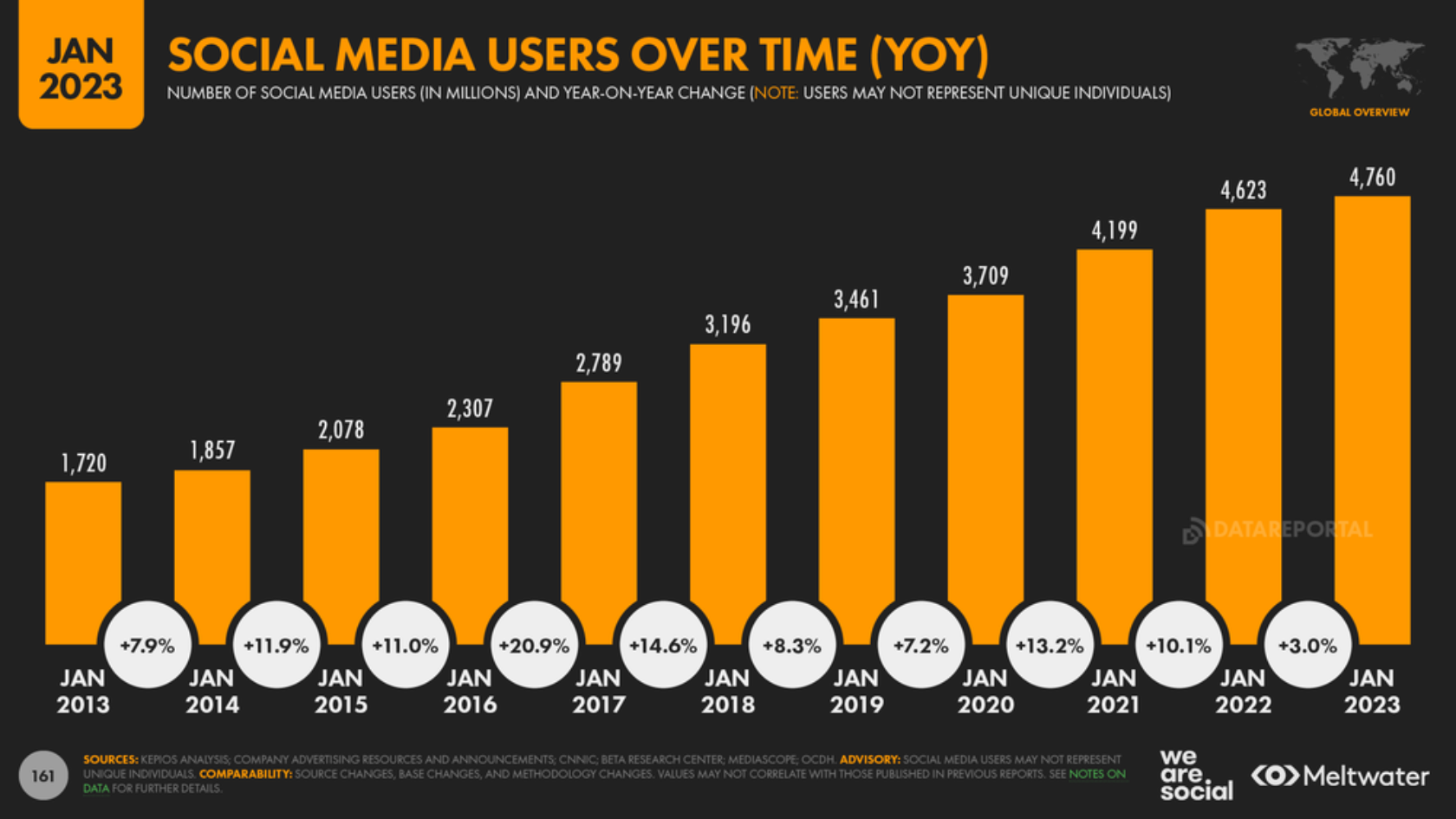5 Ways Social Media Can Benefit Your Business
With billions of active users, social media is a goldmine for companies looking to build brand awareness, acquire new customers, and increase customer loyalty. Here’s how to make sure you’re taking advantage of the dynamic capabilities social media has to offer.
Social media platforms like Facebook, Twitter, and Instagram are not just a place for sharing photos and messages but also powerful tools for businesses to promote their brand and connect with customers.
A business without a social media marketing plan is certainly at a disadvantage in today’s digital world. Whether you’re a large B2B enterprise organization or a small e-commerce business, we will explore five ways social media can benefit every part of your company and marketing strategy.
1. Changing Customer Service
Social media has transformed customer service in many ways. Businesses today are under mounting pressure to provide exceptional customer service to their fan base, as negative comments can quickly spread and damage their brand reputation.
In the past, customers would have to call a company’s customer service hotline or send an email to resolve an issue. With the rise of social media, customers can now reach out to businesses through their social media accounts; getting their questions answered and issues resolved easier and faster.
As mentioned, social media also provides a more public forum for customers to voice their opinions, which can be positive and negative. By becoming more accessible, transparent, and interactive, social media allows businesses to build stronger customer relationships. By responding to comments and messages promptly and addressing any issues professionally, companies can demonstrate their commitment to customer satisfaction and build trust with their followers.
2. Building Brand Awareness
In today’s digital age, social media has become essential for businesses to build brand awareness. By creating a solid social media presence, businesses can establish themselves as industry authorities and increase their reach. This is especially important in a competitive market where thousands of competing businesses are fighting for the attention of your potential customers.
By consistently posting high-quality content and engaging with their audience, businesses can stand out and establish a loyal customer base. In addition to increasing brand awareness, social media can help businesses monitor their brand reputation and address any negative feedback. By staying on top of social media conversations, businesses can resolve customer complaints and maintain a positive image.
3. Helping Your Brand Stay Relevant
Social media has become a critical platform for businesses to stay relevant in today’s fast-paced world. With trends evolving at lightning speed, social media is where trends are born and spread. To keep up with emerging trends relevant to your audience, it’s crucial to keep your finger on the pulse of social media.
Social media is not just about trends. Social media is a vital component of a long-term brand strategy that helps businesses stay top of mind for years. Brands that ignore or neglect their social media presence risk becoming irrelevant and being abandoned by their communities.
In the face of fierce competition for consumer attention, you must tune into conversations around your brand and industry. Social listening is a valuable tool that allows businesses to analyze what people say about their company. Businesses can build a stronger brand image and foster deeper connections with their customers by engaging with their audiences.
4. Revamping Your Sales Strategy
Social media has become an essential component of a successful business marketing strategy. With the ability to target specific audiences and track engagement and conversions, social media advertising offers a cost-effective way to reach new customers. By creating targeted ads and optimizing them for specific goals, such as website traffic, or sales, businesses can increase their return on investment (ROI) and drive revenue growth. Social media can also nurture leads and build customer relationships through personalized messaging and content. By leveraging the power of social media in their sales strategy, businesses can achieve their sales goals and gain a competitive edge in their industry.
5. Helping Build A Brand Community
Engaging with customers on social media is critical for businesses to stay culturally relevant. According to The Sprout Social Index, 41% of marketers agree brands that actively engage with their communities are culturally relevant. Promptly responding to messages and reviews shows you value your customers’ opinions. With brand community, businesses can build trust and foster deeper connections with their audience.
Social media is another tool allowing businesses to showcase their personality and humanize their brand. By creating authentic and relatable content and engaging with their followers, businesses can stay relevant and top of mind for their target audience. In today’s digital landscape, where customers have high expectations for personalized and responsive brand interactions, social media engagement is essential for businesses to remain competitive and succeed.
If you’re struggling to connect with your audience, working with a digital marketing agency can help.
Working With Onimod Global
Working with an experienced social media marketing agency can be an invaluable investment if you’re having difficulty connecting with your audience on social media. At Onimod Global, we are experts in providing various digital marketing solutions for every type of business and industry. Our talented social media team excels in content creation, webinar marketing, SEO, and more, as we stay attuned to the latest technological advancements in the digital marketing industry. For a full list of our offerings, see here.
Final Thoughts
Social media can benefit every part of your business, from building brand awareness to improving employee engagement. By creating a social media strategy and leveraging its power, businesses can drive sales, increase customer loyalty, and build a strong company culture.
At Onimod Global, we’re passionate about our experience in brand strategy and social media advertising to help businesses succeed with modern marketing strategies. Contact us today to learn more about how we can help elevate your business to the next level.


